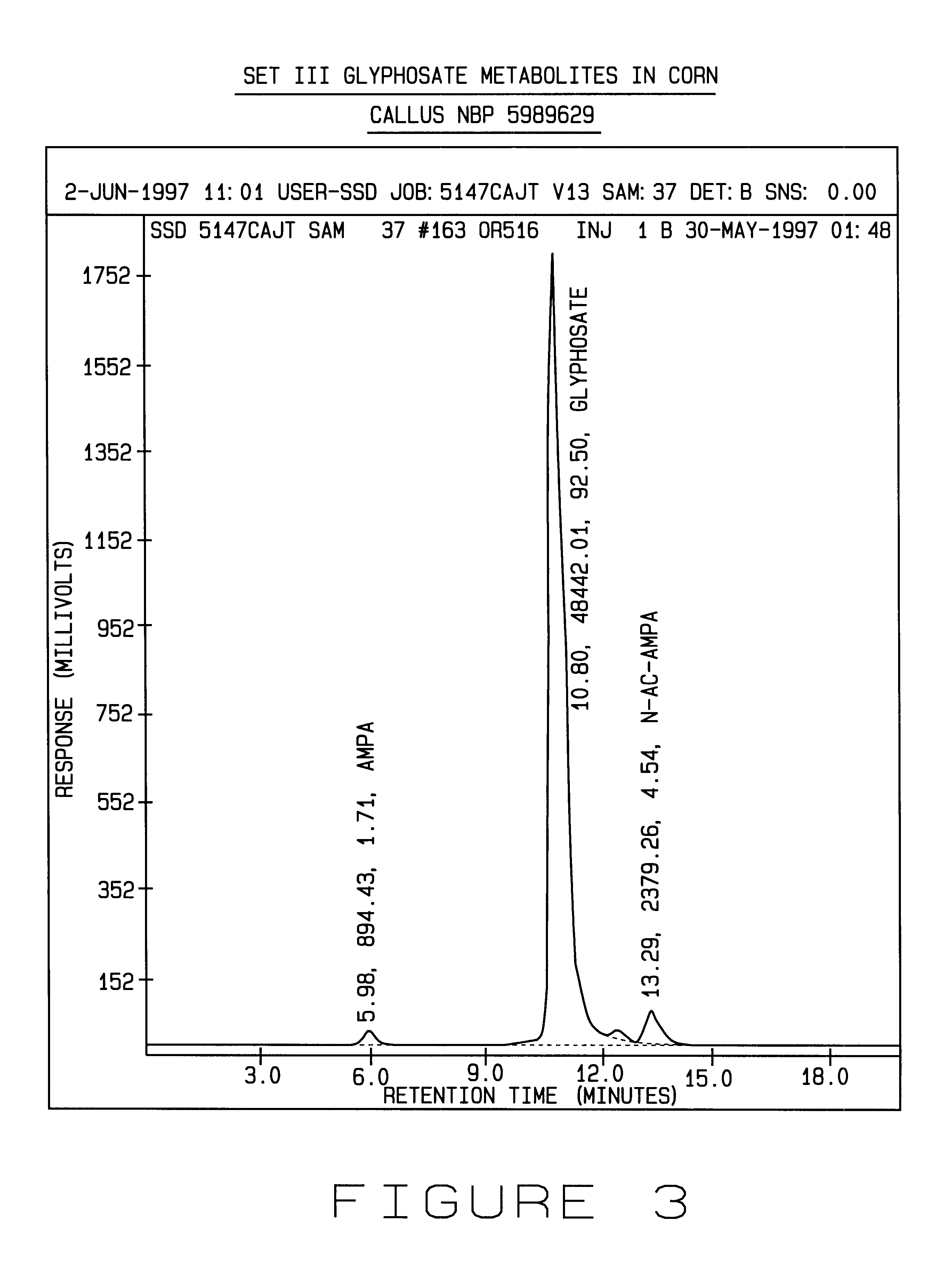Plants and plant cells transformed to express an AMPA-N-acetyltransferase
- Summary
- Abstract
- Description
- Claims
- Application Information
AI Technical Summary
Benefits of technology
Problems solved by technology
Method used
Image
Examples
example 1
This example illustrates the growth inhibitory effects of N-aminomethyl phosphonic acid (AMPA) on plant callus tissue, and the lack of inhibition of N-acetyl-aminomethyl phosphonic acid on plant callus tissue in in vitro culture conditions.
Certain recombinant plant species which express a bacterial GOX gene, and which were also exposed to glyphosate, can exhibit phytotoxic effects manifested through such symptoms as chlorosis, flower abscission, and reduced fertility. The basis for these symptoms had not previously been determined. Previous studies had indicated that plants expressing GOX metabolized glyphosate to AMPA and glyoxylate (U.S. Pat. No. 5,463,175). Glyoxylate is readily metabolized by plants, however AMPA persists in plant tissues and may be the cause of phytotoxic effects such as chlorosis, stunting, or other undesireable effects. It had previously been shown that Achromobacter species LBAA was able to enzymatically modify AMPA to N-acetyl AMPA (U.S. Pat. No. 5,463,175)...
example 2
This example illustrates that degradation of glyphosate by GOX enzyme hydrolysis in the bacterium Achromobacter sp. strain LBAA results in the production of AMPA and N-acetyl AMPA.
It has been previously shown that GOX mediated glyphosate degradation produced glyoxylate and AMPA (Barry et al., U.S. Pat. No. 5,463,175). Achromobacter sp. strain LBAA was also shown to produce AMPA and glyoxylate as a result of glyphosate degradation. The glyphosate degradation pathway was characterized in resting cells of glyphosate-grown Achromobacter sp. strain LBAA according to the following procedure. Cells from a 100 ml culture of LBAA, grown in DF3S medium containing glucose, gluconate and citrate as carbon sources and with thiamine and Yeast Extract (0.01%) to supply trace requirements and with glyphosate at 0.2 mM as a phosphorous source, were harvested at a cell density of 200 Klett units, washed twice with 20 ml of DF3S medium and the equivalent of 20 ml of cells were resuspended in 100 .mu.l...
example 4
This example illustrates the identification of an E. coli phn operon gene encoding an enzyme capable of AMPA acylation.
PUM
| Property | Measurement | Unit |
|---|---|---|
| Volume | aaaaa | aaaaa |
| Volume | aaaaa | aaaaa |
| Volume | aaaaa | aaaaa |
Abstract
Description
Claims
Application Information
 Login to View More
Login to View More - R&D
- Intellectual Property
- Life Sciences
- Materials
- Tech Scout
- Unparalleled Data Quality
- Higher Quality Content
- 60% Fewer Hallucinations
Browse by: Latest US Patents, China's latest patents, Technical Efficacy Thesaurus, Application Domain, Technology Topic, Popular Technical Reports.
© 2025 PatSnap. All rights reserved.Legal|Privacy policy|Modern Slavery Act Transparency Statement|Sitemap|About US| Contact US: help@patsnap.com



